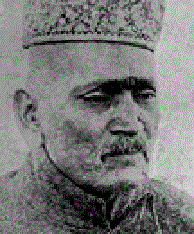Vishnu Pant Chhatre

This is a collection of articles archived for the excellence of their content. |
Contents[hide] |
The authors of this article are …
Circus - down, but not out Nitha S V, Manorama Online October 9, 2013<> Preetha Kadhir, A brief history of the Indian circus, The Hindu <> Aum9 <> Indian Circus Today<> Asit Jolly, India Today<> The Times of India<>
The man
Vishnupant Moreshwar Chatre (1840-1906) was born in Ankalkhop, a small village in Sangali, Maharashtra. ‘Prof.’ Vishnupant Chatre, as he is sometimes referred to, contributed a lot to this art and also played a part in popularising the circus in India.
Basically, he was a master in horse riding. He was also a good, trained classical singer.
There is an interesting reference in Two Men and Music : Nationalism in the Making of an Indian Classical ... by Janaki Bakhle, Assistant Professor of History Columbia University. Dr Bakhle informs us that classical singer Abdul Karim, the maverick genius of his time, argued with Vishnupant Chatre about the purity of gharana pedigrees.
That was Chhatre's level: he was no amateur singer but a knowledgeable musicologist who could hold his own in music theory against the best in the land.
Watches an Italian circus
In 1879, the Royal Italian Circus, directed by William Chiarni toured India. Balasaheb Patwardhan, the ruler of the princely state of Kurundwad in Sangli, (now part of Kolhapur district), went to watch it in Bombay with Vishnupant Moreshwar Chhatre, the superintendent of his stables.
Chhatre was impressed by the circus and set up the Great Indian Circus in 1880 — this was the birth of the circus in India. Philip Astley, an English riding master, confirms this.
During that period, Indians were averse to creating their own circus companies.
Though Chatre was greatly impressed by the performance, he was irked by a sarcastic comment made by Chiarini that India was at that point in time not ready to have a circus of its own and it would take another ten years to start one.
And sets one up himself
So, Chatre and his wife decided to establish one. His wife was a trapeze artiste and a trainer of wild animals. Thus, the first Indian circus company was established in 1880 in Taasgaon, in Miraj district. The first show of Chatre’s Great Indian Circus was held on March 20th 1880 and the audience was a select group of people, including the Rajah.
Christened "Grand Indian Circus," it travelled—in the footsteps of Chiarini—not only inside India (to north India, Chennai) and Ceylon but also to south and East Asian countries and even to the US. He returned home unable to match the standards of the giant circuses there—notably, the mighty Barnum and Bailey Circus which was the greatest circus in the world. . Coming to terms with reality, Chatre resumed his pursuit within the country. It was due to his efforts that circus came to Kerala!
It did not take long for circuses to attract the attention of people in Thalassery [in present-day Kerala]. Prominent among them was the legendary gymnast Keeleri Kunhikkannan Master, who was working as a gymnast in the Basel Mission school of Gundert.
When Chatre's circus visited Thalassery, it also brought a major change in this artist’s life. He made a deal with Chatre hoping that his students would get employment opportunities in the Grand Indian Circus.
Aware that acrobatic acts were becoming popular in international circuses, Chatre hired Kunhikannan to train acrobats for him. Over the next few years, Kunhikannan trained a number of fine acrobats for Chatre’s circus. (ByWayStar)
The story is continued on the page Rajkamal Talkies, Chirakkuni
See also
Vishnu Pant Chhatre